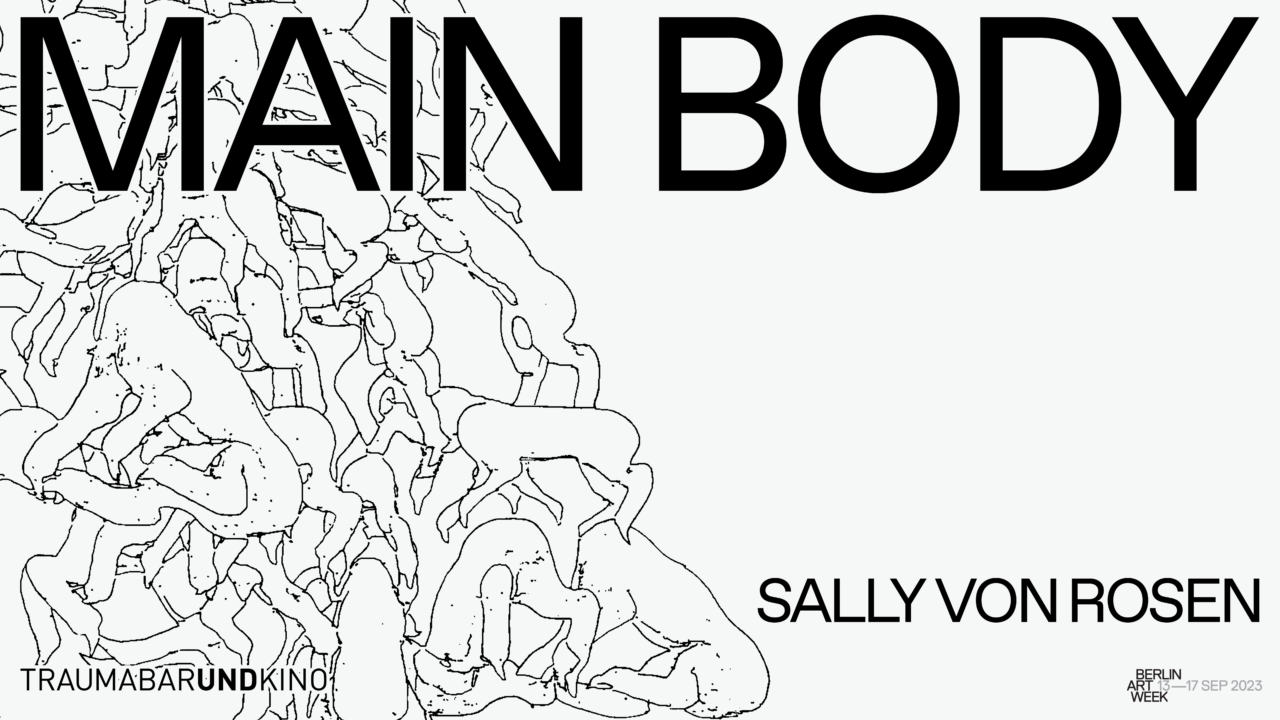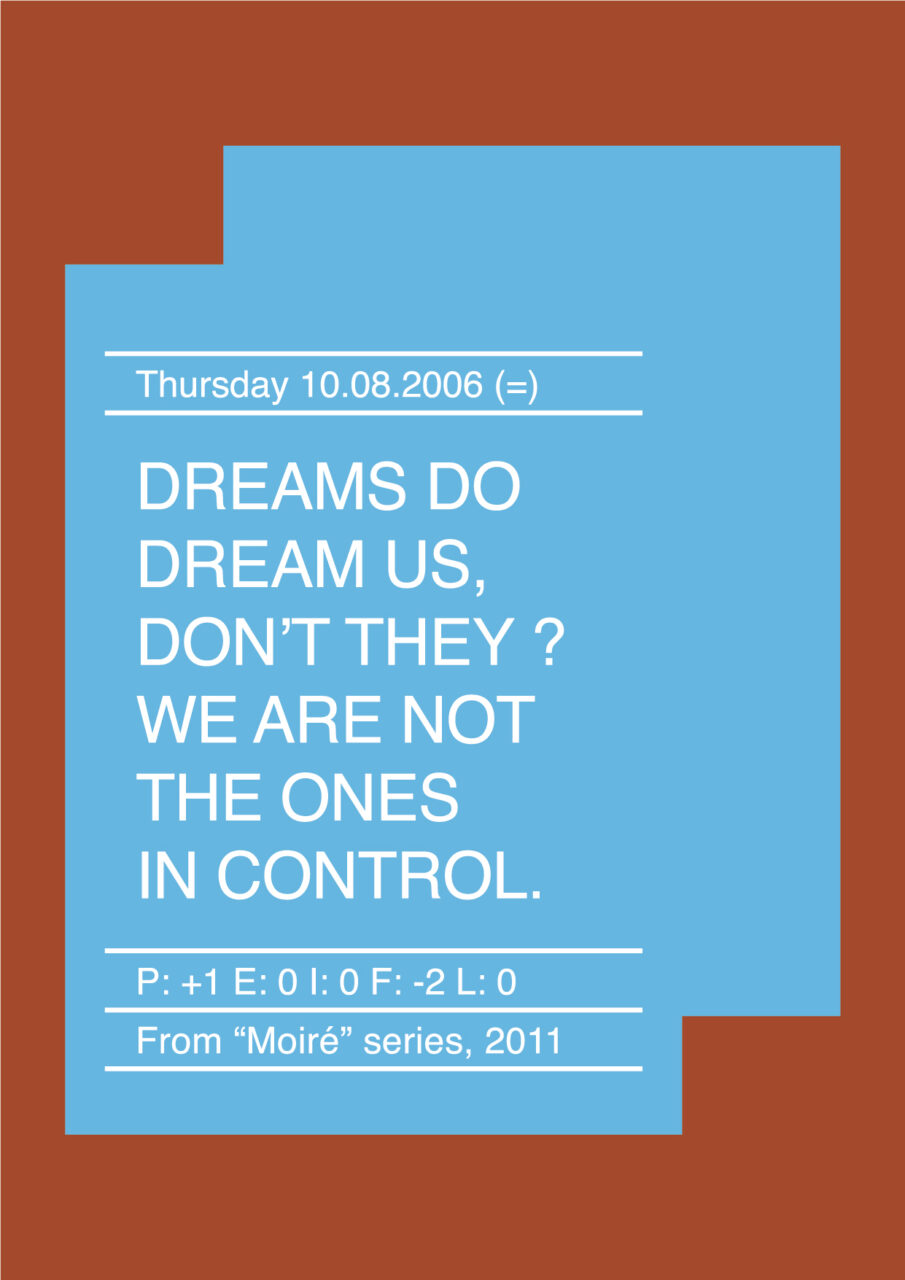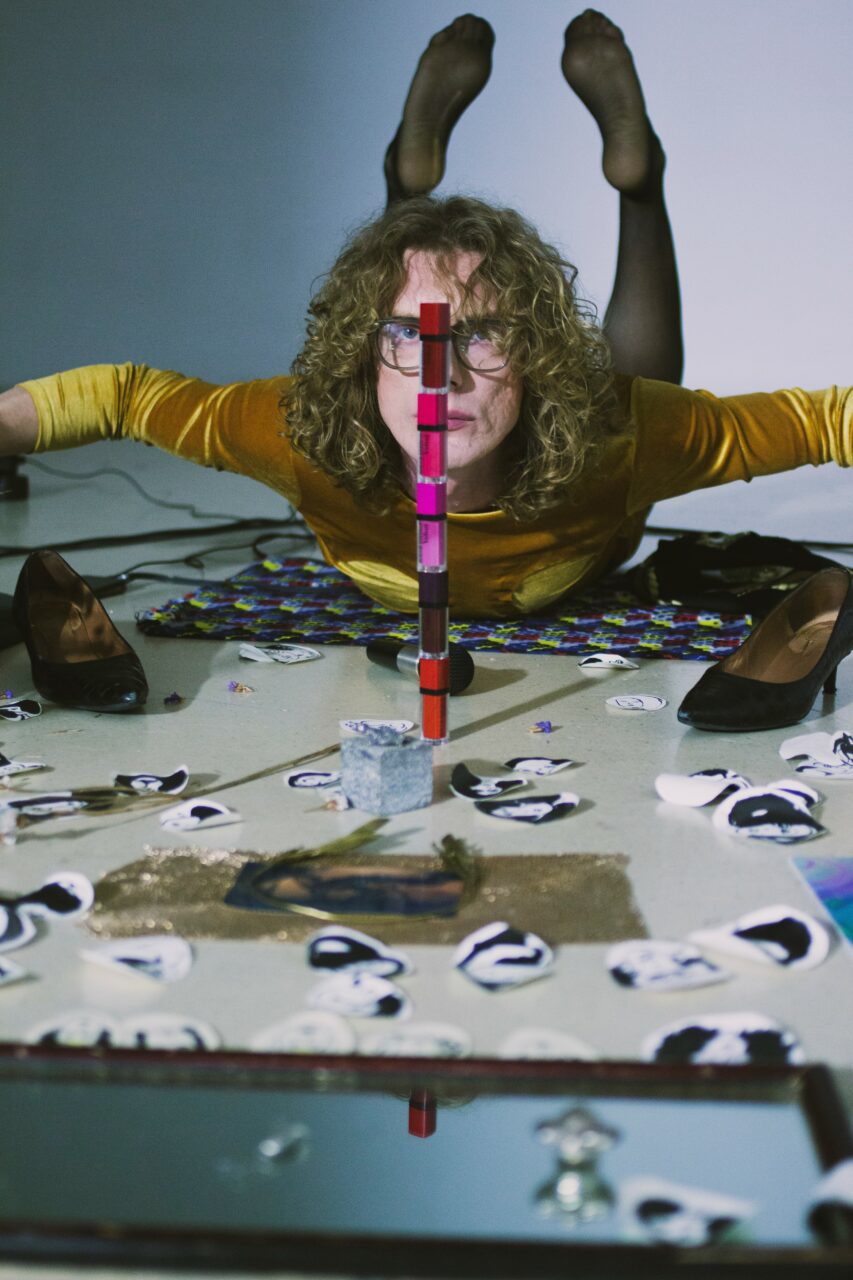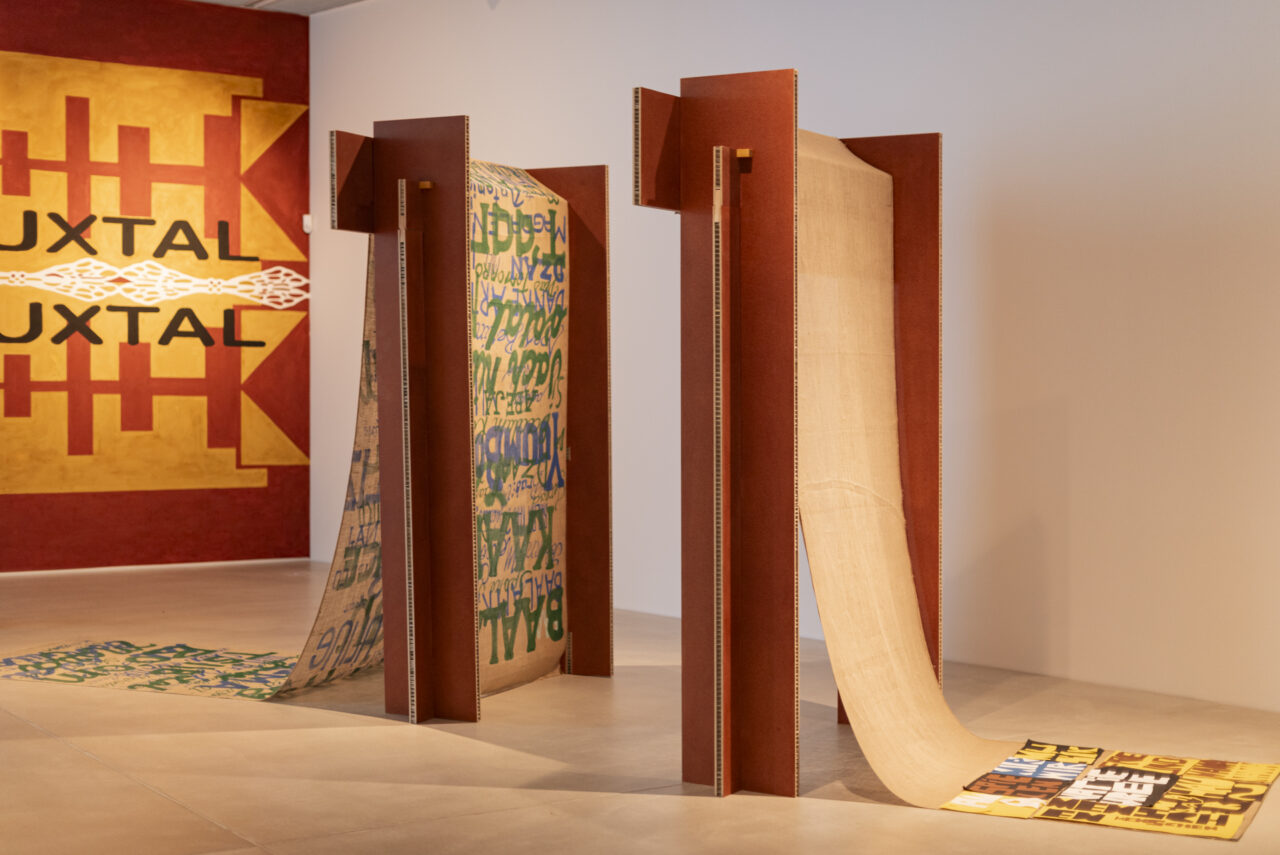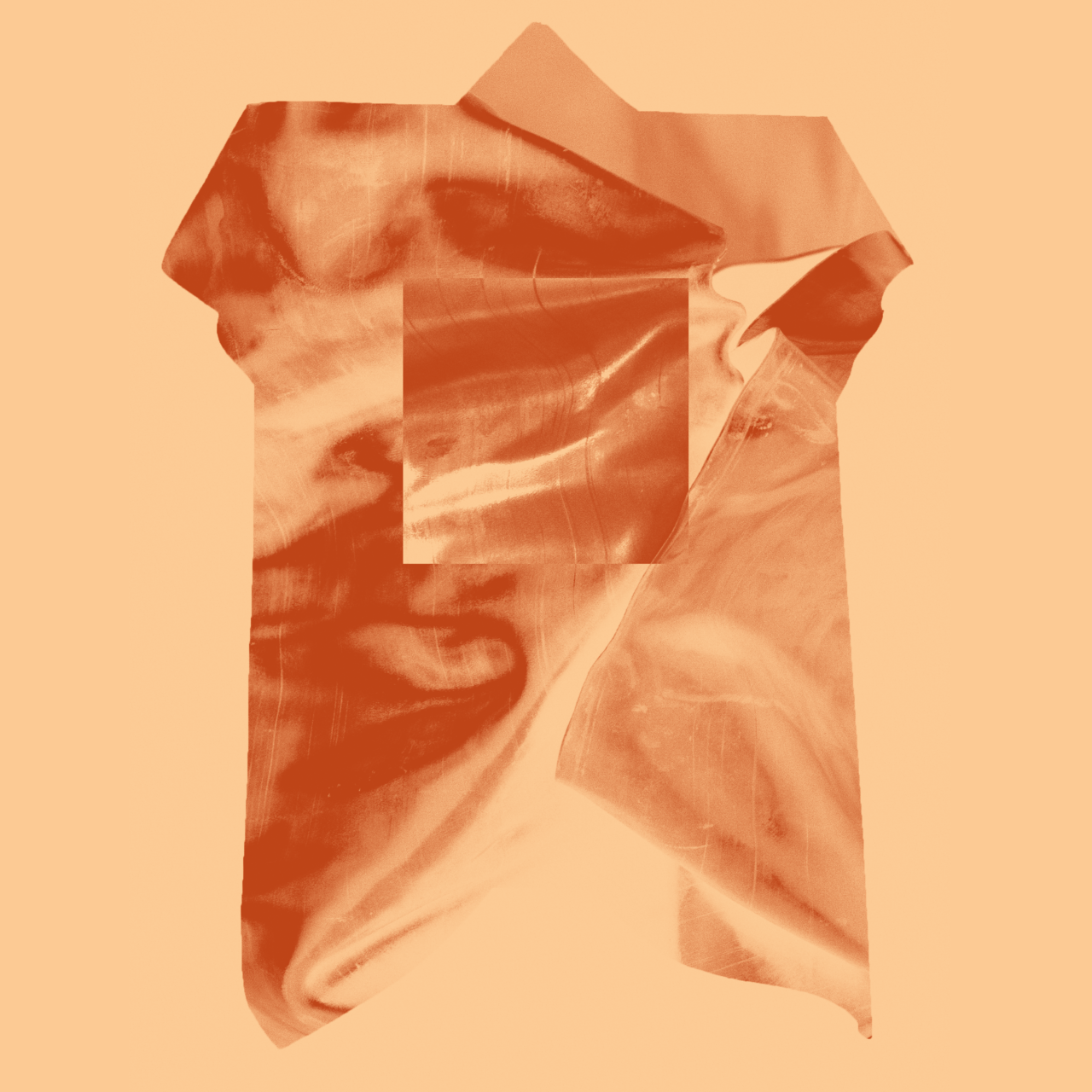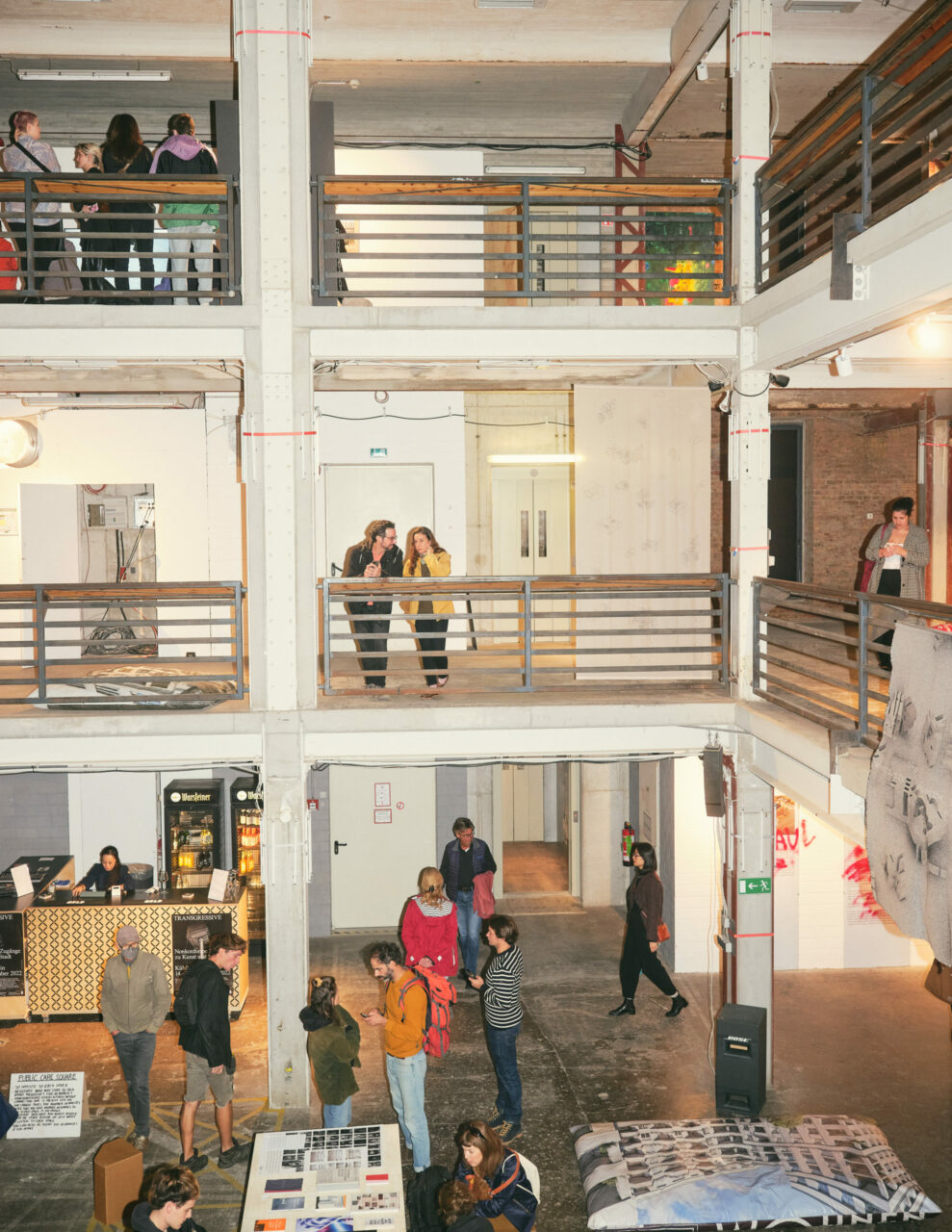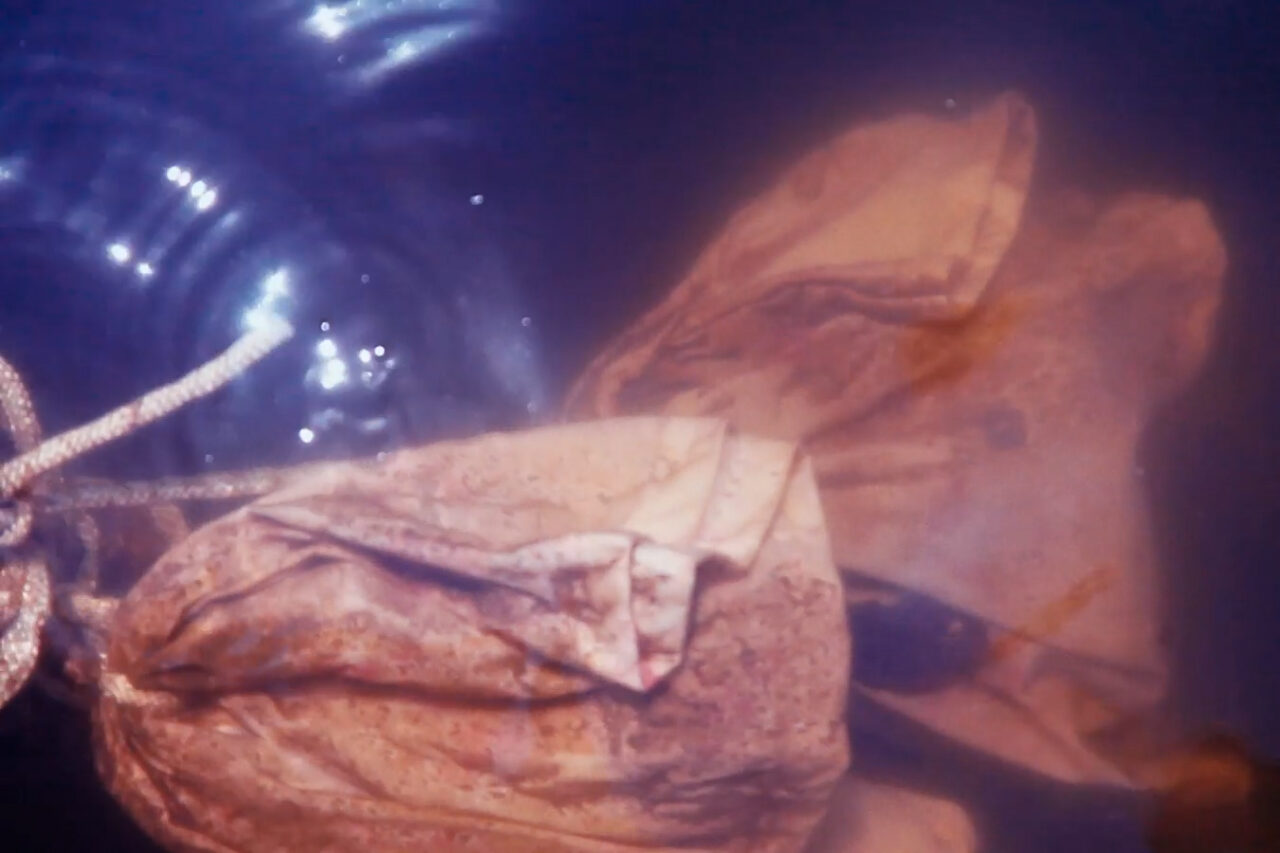Bum in front, bum in the back, aesthetically somewhere between archaic and cyborg: the headless, shiny sculptures of the young sculptor Sally von Rosen show a fusion of bodily orifices and limbs, a slide into the realm of the absurd. Around 50 of her quirky quadrupeds will be on display during Berlin Art Week, balanced on top of each other to form a floor-to-ceiling pyramid at Trauma Bar und Kino. The venue is not only a club, but also a hub for the auditory, performative, and visual arts. Located near Berlin’s main railway station in an area known as Europacity, where modern apartment blocks and the occasional glass-fronted office tower dot the cityscape, the privately run art centre occupies a former logistics hall—a singularly experimental and undefined space.
The BAW Featured section also highlights venues that are important for the arts in a city that is becoming denser, more expensive, and increasingly played out.
Von Rosen’s pyramid of bodies is one of twelve projects on show in BAW Featured, a new section of Berlin Art Week that brings together special projects that stray from the traditional museum and gallery fare—the kind of autonomous initiatives that can range from a nomadic solo concert to a sprawling group show in a former power station. They convey the »spectrum of artistic exchange, exhibitions and explorations that Berlin is so well-known for«, as Krist Gruijthuijsen (director of KW Institute for Contemporary Art), Catherine Nichols (curator at Hamburger Bahnhof—Nationalgalerie der Gegenwart), María Inés Plaza Lazo (co-founder and co-editor of Arts of the Working Class), and Mona Stehle (programme director of Berlin Art Week), put it. The group formed the jury that selected twelve projects from a total of 90 submissions for the second iteration of BAW Featured. Selected works underscore the »challenge the city faces […], holding itself up as a mirror of culturally progressive and liberal society«, as the jury’s official statement articulates. The BAW Featured section also highlights venues that are important for the arts in a city that is becoming denser, more expensive, and increasingly played out.
There is Between Bridges, an art space that often conjures the name of its founder, Wolfgang Tillmans. Architecturally, it opts for understatement. It was only last year that Between Bridges’ residential and studio building was completed at the end of Adalbertstraße, its grey plaster exterior adorned with green window accents, just a stone’s throw from the hotly contested Köpi Wagenplatz. Even more surprising are the treasures hidden behind the entrance. It is here that Berlin Art Week will see the delicate scenarios of Ioana Nemeş, the Romanian artist whose conceptual objects and installations tread the fine line between art and life. Nemeş used symbols, language, and narrative as consistent instruments of self-exploration. Her project ›Monthly Evaluations‹ (2005—2010), for example, evokes On Kawara’s well-known ›Today‹ series at first glance. However, unlike Kawara’s technically flawless daily renderings of the current date on canvas, Nemeş created an archive of time and place, meticulously displayed on information boards with contemplative, wayward annotations. On Thursday 10 AUG 2006, she wrote, »Dreams do dream us, don’t they?«. On Monday 12 APR 2010, she noted, »In sorrow all the facial muscles relax«. Tragically, Nemeş died of cardiac arrest in New York in 2011, aged just 32. Her meditative body of work, cut short by a twist of fate, has been exhibited repeatedly since then, but rarely as a solo show in such an intimate venue as Between Bridges.
Between Bridges is a non-commercial art haven—Tillmans personally orchestrated its existence, commissioning a new building after the project space spent many years in a storefront in Schöneberg. Berlin’s independent art scene is after all notoriously shallow-pocketed, often securing commercial spaces for projects on a shoestring. But such spaces are becoming increasingly scarce. The queer performer Filipka Rutkowska once brought her wildly oscillating fitness sessions, a blend of ritual and stand-up comedy, to the rooftops of Warsaw’s high-rise buildings. Now, as part of Berlin Art Week’s Featured section, she is set to perform in one of those ever-more-rare Berlin storefronts: Pickle Bar in Moabit, the aperitivo bar cum project space run by the artists’ collective Slavs and Tatars.
The Spore Initiative embodies a private version of the museum as set out in criteria stipulated by the International Council of Museums (ICOM) in August 2022. It is a definition that applies specifically to public venues that can be described as »inclusive« and »participatory« with a focus on »promoting sustainability and diversity«.
The Spore Initiative has recently brought its holistic and inclusive approach to the Berlin art scene, specifically in the Neukölln district—with significant urban impact. Designed by AFF Architekten, a firm best known for their school buildings, the sprawling Spore cultural complex on Hermannstraße features layered brick outside and raw concrete inside. This new building houses exhibition spaces, studios, an in-house cinema, a library, terraces, and a garden. Financed by the foundation of entrepreneur and mail-order heir Hans Schöpflin, the unconventional project is led by Antonia Alampi; Alampi was previously co-artistic director of Savvy Contemporary in Berlin, where she worked alongside current Haus der Kulturen der Welt (HKW) director Bonaventure Soh Bejeng Ndikung. The concept of art as knowledge exchange and collective process plays an important role at Spore. During Berlin Art Week, the existing exhibition will be gradually expanded to include six new contributions, each directing focus to our ecologically depleted planet. Guatemalan artist Edgar Calel will probe the relationship between society and nature with ephemeral installations made of earth, fruit, and tools; fantastical landscapes by artists Tushar and Mayur Vayeda will be presented for the first time. Rendered in the reduced yet striking palette and geometric forms characteristic of traditional Warli painting, a style associated with the brothers’ indigenous community in western India, the landscapes depict mythical creatures, animals, and human figures. And Bärbel Rothhaar, who has spent years exploring the importance of insects in our ecosystem through beeswax figures and bee hotels, will present a pollen map at Spore as part of Berlin Art Week.
The Spore Initiative embodies a private version of the museum as set out in criteria stipulated by the International Council of Museums (ICOM) in August 2022. It is a definition that applies specifically to public venues that can be described as »inclusive« and »participatory« with a focus on »promoting sustainability and diversity«. ›The Fairest‹, by contrast, takes a directly subversive approach, taking aim at the art market. Now in its second year, the fair showcases emerging art for sale at Kühlhaus, the former cold store that really did keep the city’s lobsters fresh around 1900. From 13 to 17 SEP, organisers and curators Eleonora Sutter and Georgina Pope will bring together the work of around 30 artists under the strident title »Get Used to This«. It presents artists who are often underrepresented by galleries and therefore absent from the traditional art fair circuit. In the event of a sale, the artists retain most of the proceeds.
›The Fairest‹ challenges the art market with its own market mechanisms.
Aesthetically, ›The Fairest‹ is more like an exhibition than a traditional fair. No booths, no smallish cubicles for individual galleries, into which all the art is crammed like products in a crowded supermarket as typical of art fairs. Instead, objects and installations are scattered throughout the space, raw and unpolished, like something you would see in Berlin in the 1990s. One encounters, for instance, Alexander Iezzi’s surreal scenes of figures, video, and everyday materials next to Göksu Konak’s material research into queer history. ›The Fairest‹ challenges the art market with its own market mechanisms. On Saturday 16 SEP, the indie fair will welcome ›Mother.Loading‹, a group of artists who uses their shimmering videos and performances, which evoke an uninhibited club night, not only as artistic expression but also as a kind of ethical advertising agency. In other words, commerce and good things converge at Kühlhaus over Berlin Art Week. With its artful amalgamation of seemingly incongruous elements, ›The Fairest‹ stretches the scope of the BAW Featured section even further, bridging the realms of institution, art market, and project space, spontaneous and established initiatives.
All selected projects for BAW Featured 2023
